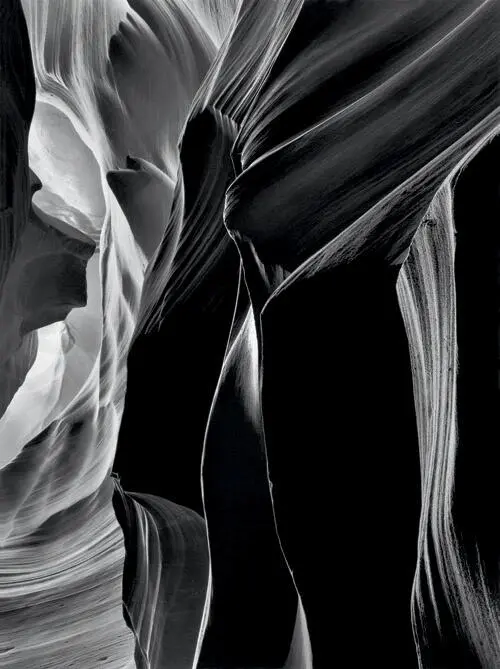Bruce Barnbaum - The Art of Photography - An Approach to Personal Expression
Здесь есть возможность читать онлайн «Bruce Barnbaum - The Art of Photography - An Approach to Personal Expression» весь текст электронной книги совершенно бесплатно (целиком полную версию без сокращений). В некоторых случаях можно слушать аудио, скачать через торрент в формате fb2 и присутствует краткое содержание. Жанр: Старинная литература, на английском языке. Описание произведения, (предисловие) а так же отзывы посетителей доступны на портале библиотеки ЛибКат.
- Название:The Art of Photography: An Approach to Personal Expression
- Автор:
- Жанр:
- Год:неизвестен
- ISBN:нет данных
- Рейтинг книги:5 / 5. Голосов: 1
-
Избранное:Добавить в избранное
- Отзывы:
-
Ваша оценка:
- 100
- 1
- 2
- 3
- 4
- 5
The Art of Photography: An Approach to Personal Expression: краткое содержание, описание и аннотация
Предлагаем к чтению аннотацию, описание, краткое содержание или предисловие (зависит от того, что написал сам автор книги «The Art of Photography: An Approach to Personal Expression»). Если вы не нашли необходимую информацию о книге — напишите в комментариях, мы постараемся отыскать её.
The Art of Photography: An Approach to Personal Expression — читать онлайн бесплатно полную книгу (весь текст) целиком
Ниже представлен текст книги, разбитый по страницам. Система сохранения места последней прочитанной страницы, позволяет с удобством читать онлайн бесплатно книгу «The Art of Photography: An Approach to Personal Expression», без необходимости каждый раз заново искать на чём Вы остановились. Поставьте закладку, и сможете в любой момент перейти на страницу, на которой закончили чтение.
Интервал:
Закладка:
##
Agitate continuously for the first minute, then for the first 15 seconds of each subsequent minute.
Table 9-5. Development of Kodak T-Max 100 Film in Kodak T-Max RS Developer (for T-Max 100 film rated at ASA 100):
Development
T-Max RS 1 : 4
T-Max RS 1 : 9
T-Max RS 1 : 19
N+2
11
N+1
8
16
N (normal)
6
11.50
24
N-1
8.50
18
N-2
7
14
N-3 = C
15*
C-1
12*
C-2
9.50*
All development times are for 75°F (24°C) .
Recommended times are in bold.
Agitation is continuous from N+2 thru N-2 .
*From C downward, agitate for the first 30 seconds of each minute for the first three minutes, then for 15 seconds every two minutes .
Give an additional exposure of 1 stop for N-2 development and 2 stops for C, C–1 and C-2 .
Rate your T-Max 100 at ASA 100 for use with T-Max RS .
Table 9-6. Chart for Developing Kodak T-Max 100, Kodak T-Max 400, Ilford Delta 100, or Ilford Delta 400 Film with Kodak XTOL Developer
Development
Dilution
Agitation
Development Time
N++
1 : 2
Continuous
17 min.
N+
1 : 2
″
14 min
N
1 : 2
″
12 min
N-1
1 : 2
″
10 min
N-2
1 : 3
″
12 min
N-3
1 : 3
″
10 min
Processing is to be done at 75°F. (Add 10 percent to all times if temperature is 68°F)
Kodak recommends using a minimum of 100 ml (3.5 oz.) of stock XTOL per 80 square inches of film (one roll of 120mm film, one roll of 35mm 36 exposures, or four 4″ × 5″ negatives) .
(Table 9-5 and Table 9-6 are supplied by courtesy of Stu Levy with modifications by Bruce Barnbaum and Don Kirby.)

The negative received compensating development to retain as much detail as possible throughout the range—yet the brightness range of the scene still pushed the limits of the film. I allowed the darkest areas of the print to disappear in pure black, seeing their forms as so sensual that detail would have intruded. The scene was abstract; the image is meant to be abstract as well, with strong lines, forms, and contrasts .
Figure 9-8. The Slit, Antelope Canyon

Using precisely the same negative development procedure as in Figure 9-8, the print has visible detail throughout; the viewer can see every bit of intricate detail that I saw while standing at the camera .
Figure 9-9. Choir and Organ, Wells Cathedral
Explanation of Compensating Development
Table 9-4 and Table 9-6 on the complete development charts for Tri-X and HP5+ list a development procedure for greatly reduced contrast via the use of extreme dilutions of HC110. Using this procedure, the dense portions of the negative are restrained significantly compared to the thinner portions. This procedure turns HC110 into a so-called “compensating developer” in the sense that it only partially develops the very dense highlights compared to the midtones and shadow areas—i.e., it “compensates” for their high sensitization level during exposure.
Note
A Note of Caution in Using a Compensating Developer
Due to the extreme dilution of the working solution, there is very little active developer present. Therefore, develop only a few sheets, or a maximum of one roll, at a time, otherwise the developer will be exhausted before full development is achieved. For roll film, it is wise to use a large tank (one containing several reels) with only one roll loaded onto a reel to assure a sufficient amount of developer in the tank. When I use HC110 as a compensating developer in 90 ounces of working solution (which contains only 2 ounces of HC110 stock solution, or ½ ounce of the liquid concentrate) I limit development to four 4″ × 5″ sheets at a time. When using N–3, I limit myself to six 4″ × 5″ sheets at a time .
“C” development (C for “compensating”) is somewhat equivalent to N–3 of the adjacent diagram in the shadow areas, but the higher zones are reduced to lower densities than N–3 would yield. In effect, C is then equivalent to an N–3; but the unacceptably short development time necessary to produce N–3 would yield uneven results, so C proves to be a greatly improved alternative. Following the trend of the adjacent diagram, C–1, C–2, and C–3 produce progressively lower contrasts.
Compensating development depends primarily on the periods of non-agitation between the periods of agitation. Each time the negative is agitated, new developer is brought to all portions of it; but during the quiet periods, the developer exhausts itself on the dense areas while more fully developing the thinner areas, hence the name “compensating”. The extradilute solution automatically prevents the densest portions from gaining excess density; it compensates for those areas potentially becoming too dense. Because this procedure depends on the quiet periods, it must be done by hand rather than by a mechanical, rotating drum with continuous agitation.
I learned about compensating development toward the end of 1979 and used it extensively starting with my discovery of the slit canyons of Arizona in January 1980 (Figure 9-8). I then used it for my studies of the English cathedrals later that same year (Figure 9-9). Thus, this purely technical procedure led to an astonishing artistic and expressive leap for me.
Two-Solution Compensating Development for Negatives
After using the compensating development procedure detailed above for nearly 17 years, I developed a superior method of dramatically lowering contrast in excessively high contrast situations or in prints where I want an extremely soft look. It involves the use of two solutions of HC110: first, a solution somewhat stronger than the normal dilution for Tri-X film in HC110 (1 part stock solution to 10 parts water); and second, a “compensating” solution (2 parts stock solution to 90 parts water).
I begin development in the first solution with constant agitation for the first 45 seconds; then I allow the negative to sit unagitated for the next 45 seconds. (Total development time at this point: 1 minute, 30 seconds.) This initial development in the stronger solution quickly develops Zones 1 and 2 close to their appropriate densities as seen in the bellows analogy. (See Figure 9-2 and imagine the look of the bellows at 1½–2 minutes development time.)
At this point, I transfer the negative to the compensating solution. I agitate for the first 30 seconds, primarily to dilute the amount of developer in direct contact with the emulsion (total development time at this point: 2 minutes). The negative sits unagitated for the next full minute. (Total development at this point: 3 minutes.) From this point, I revert to my usual procedure of 15 seconds agitation at the start of each minute followed by 45 seconds of non-agitation. At 10 minutes total development time (i.e., 10 minutes from the time the negative was first placed in the first developer), the negative is removed from the developer and placed into the stop bath, followed by the fixer.
Читать дальшеИнтервал:
Закладка:
Похожие книги на «The Art of Photography: An Approach to Personal Expression»
Представляем Вашему вниманию похожие книги на «The Art of Photography: An Approach to Personal Expression» списком для выбора. Мы отобрали схожую по названию и смыслу литературу в надежде предоставить читателям больше вариантов отыскать новые, интересные, ещё непрочитанные произведения.
Обсуждение, отзывы о книге «The Art of Photography: An Approach to Personal Expression» и просто собственные мнения читателей. Оставьте ваши комментарии, напишите, что Вы думаете о произведении, его смысле или главных героях. Укажите что конкретно понравилось, а что нет, и почему Вы так считаете.












